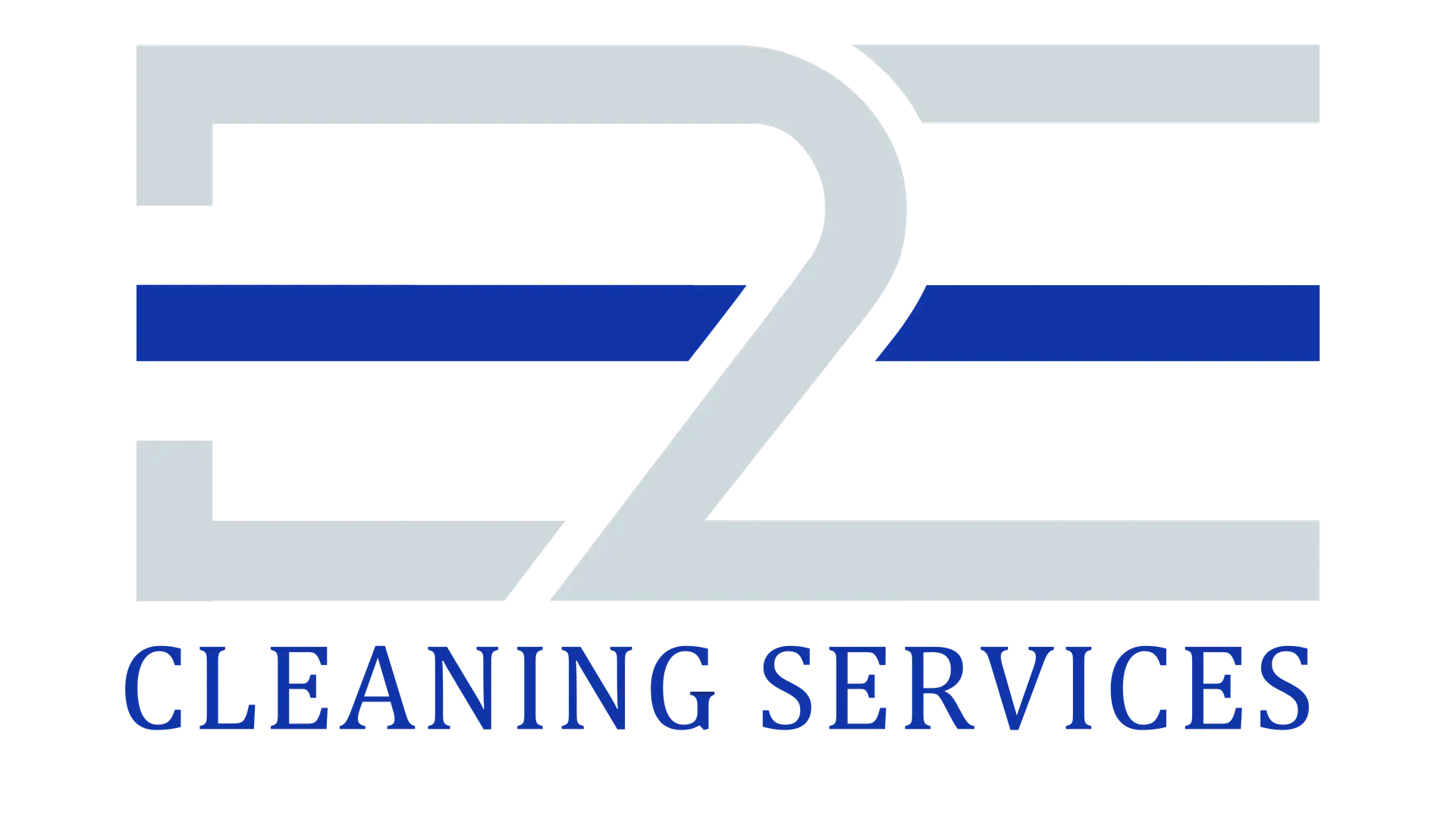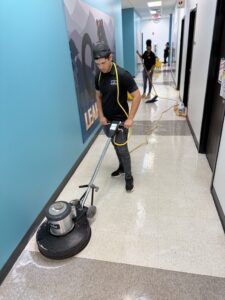Florida businesses have special challenges during hurricane season demanding specific cleaning procedures before and after the landfall.
This detailed guide describes practical, time-saving cleaning systems that facility managers and business owners can put in place in one day to safeguard their investments, reduce downtime, and guarantee quick recovery. Your business can come out of storm season with little disruption and financial damage if you are adequately prepared.
The Critical Role of Storm Preparation for Florida Businesses
Florida businesses environment is one of America’s most hurricane-prone areas, where adequate preparation isn’t just recommended, it’s a necessity for survival. Hurricane damage costs Florida businesses billions each year, with average business interruption claims exceeding $250,000 per incident, according to the National Oceanic and Atmospheric Administration (NOAA).
Nevertheless, companies that have a full storm cleaning system in place tend to save 35-60% on recovery costs and return to business 70% faster than their unprepared counterparts.
The idea of becoming “storm-ready in a day” tackles a typical problem for busy facility managers and business owners. without long term business interruption the effective preparation. Although ideal hurricane preparedness should be developed gradually over the entire year, this rapid approach focuses on the most important cleaning tasks and preparations that provide the greatest protection in the shortest period.
The financial benefits of proper preparation do not stop at immediate property protection. Insurance providers are now reviewing pre-storm protocols when processing claims, and documented preparation efforts are leading to better claim resolutions and lower deductibles.
Moreover, businesses that recover quickly resume operations sooner than competitors, gaining long-term competitive advantages from short-term preparation.
Preparation quality has a direct effect on recovery timelines, the FEMA states that 40% of businesses never re-open following a major disaster. Those that survive among businesses do so 2-5 days quicker than those that do not have documented cleaning protocols.
This acceleration translates to significant financial protection, as disruptions typically cost businesses $5,000-$25,000 per day, depending on their size.
Pre-Storm Assessment and Focused Cleaning Priorities
The first step to effective storm preparation is systematic evaluation of your facility to determine vulnerable areas to be addressed on priority.
Instead of trying to clean everything thoroughly, start with the most dangerous areas first:
Critical External Vulnerability Points:
- Roof access points, drains and perimeter systems.
- Penetrations of the building envelope such as windows, doors, vents.
- Exterior HVAC equipment and ventilation system.
- Gutters, downspouts and drainage path ways.
- Outdoor areas of storage with chemicals or equipment
Interior Priority Zones:
- Electrical rooms, server centers, and telecommunications equipments.
- Areas for storing documents with paper records o Inventory storage, particularly ground-level stock.
- Equipment used in production susceptible to water exposure.
- Food preparation and storage areas (for food service businesses).
Develop a checklist of cleaning priorities that covers these areas in terms of priority not proximity.
Organize tasks into immediate action items (those that must be done no matter the time of the storm), 4-6 hour priorities (necessary for preventing major damage), and secondary issues (significant, but less important).
This tiered approach guarantees that critical tasks get attention even in the event of sudden acceleration of storm timelines.
Responsibility assignment is yet another important part of preparation for storms. Every cleaning and preparation activity should have a specific team member who will be responsible for doing it, verifying it and documenting it.
Develop a simple responsibility matrix that will identify:
- Task description and specific location
- Primary responsible person
- Secondary/backup responsible person
- Required supplies and equipment
- Verification method (photo, checklist, inspection)
- Estimated completion time
This systematic approach ensures accountability and prevents critical tasks from being overlooked, especially when working under tight preparation deadlines.
Essential Cleaning Protocols for Hurricane Protection
Properly applied targeted cleaning protocols prior to a storm will reduce your facility’s vulnerability substantially.
Pay attention to these basic cleaning procedures ranked by protection value:
Exterior Cleaning Requirements:
Exterior drainage systems need urgent attention because clogged drainage pathways account for most preventable water intrusion.
Commercial grade wet vacuums should be utilized to clean roof drains, gutters, and downspouts and then inspected with inspection cameras if possible.
Use biodegradable disinfectants on drainage systems to inhibit bacterial growth during water build up. For facilities with flat roofs, make sure scuppers are not blocked and roof membranes are free from debris that may puncture during high winds.
The outdoor spaces need to be cleaned systematically to remove possible projectiles. Use pressure washing equipment with at least 2000 PSI capacity to clean outdoor furniture, equipment and facades, secure or move them before storms.
Coat outdoor surfaces with commercial grade disinfectants to avoid microbial growth in case of flooding. For exterior glass apply temporary protective films or install pre-measured storm shutters as per building code.
Interior Priorities:
Interior floor cleaning becomes especially important as a pre-storm protocol. Use commercial extractors with at least 10-gallon solution tanks to clean carpets thoroughly, then apply EPA-registered antimicrobial treatments to prevent mold growth if flooding occurs.
For hard flooring, seal with water resistant sealants after cleaning with neutral pH cleaners and disinfectants.
Make sure floor drains are not blocked by mechanical auger cleaning when necessary. Clean up procedures for electrical equipment are specialized.
Disconnect non-essential systems as per manufacturer instructions, then clean exterior surfaces with electronics safe disinfectants with less than 70% isopropyl alcohol. Coat connection points with dielectric protective sprays but do not touch terminals directly.
Raise equipment at least 12 inches above expected flood levels, and use commercial grade equipment risers if available.
Documentation Protection:
The protection of documents requires physical and digital measures. Physical records should be kept in waterproof containers that meet NFPA 232 standards for vital records, and at least 24 inches above floor level.
Before storage, clean and dry documents, moisture in sealed containers speeds up deterioration.
For critical documents, make digital backups at 300 DPI minimum scanning resolution and then store using redundant cloud systems with AES-256 encryption and geographic server distribution to avoid regional outages from causing access to be lost.
Quick-Implementation Cleaning Systems
The implementation of rapid storm preparation calls for structured cleaning systems that are designed to be time efficient.
These protocols manage the need for comprehensive preparation against practical time limits:
4-Hour Exterior Protocol
The exterior rapid preparation system breaks down your facility’s exterior into quadrants and has teams working on each quadrant at the same time instead of finishing the whole building one after the other.
Start with a high pressure (2500+ PSI) cleaning of drainage systems and gutters, and then apply commercial grade sanitizers to minimize microbial growth after flooding. Then, remove and secure exterior items such as signage, decoration and furniture systematically.
Pre-measured commercial-grade barricade systems should be installed for vulnerable entry points, such as doorways, floor drains, windows, or ventilation shafts. These should be quick-installation systems, ideally stored in easily accessible locations near high-risk areas to ensure easy deployment.
Facilities that have exterior chemical storage should have HAZMAT compliant securing protocols such as secondary containment verification and water resistant coverings. End exterior preparations with photo documentation from established reference points, can be useful for insurance documentation.
6-Hour Interior Protocol
Interior preparation starts with systematic lift of vulnerable items, on commercial grade plastic pallets with 12-24” clearance from floor level.
Electronics, valuable documents and high value inventory should be given top priority. Commercial grade, waterproof tarps (at least 10-mil thickness) should be used to cover immobile equipment using contractor grade tape in overlapping patterns to prevent water infiltration.
Chemical storage areas need special attention, and should compliant with EPA standards for segregation protocols to avoid environmental contamination in case of flooding.
Prevent flooding backups by cleaning floor drains with commercial vacuum systems. Reduce contamination risk after floods by pre-treating floors with quaternary ammonium antimicrobial solutions.
Complete the interior protocol with systematic documentation of pre-storm conditions, taking time-stamped images from specified reference points.
2-Hour Documentation Safeguarding
The first step in protecting documents is rapid scanning of key operational documents such as insurance policies, employee records, vendor agreements, and facility plans.
Use commercial scanners with sheet-feeding capabilities of more than 50 pages per minute and save files in PDF/A format for archival stability.
Adopt a structured file naming protocol that includes date, document type, and importance classification for easy post-storm retrieval. Physical documents should be stored in waterproof document storage containers that meet NFPA standards in designated elevated locations not less than 12 inches above anticipated flood levels.
Develop a quick document recovery map that will indicate the location of all critical documents categorized and copies distributed to several team members while stored in off-site locations.
Quick-implementation cleaning systems. Click to get storm-ready in one day
Emergency Cleaning Supplies and Equipment
Having an emergency cleaning supply inventory dedicated to storm preparation avoids the dire supply shortage in the region when there is a surge in demand.
Your storm-ready cleaning inventory should contain:
Essential Storm Preparation Supplies
- Industrial grade wet/dry vacuums with 6.5 HP motors and 16 gallon capacity.
- Commercial pressure washers (gas-powered) over 2500 PSI, with multiple nozzle options.
- Antimicrobial concentrates with quaternary ammonium compounds for the protection of surfaces.
- Water resistant commercial grade barricade materials such as tarps more than 10-mil thick.
- Moisture meters of commercial grade for monitoring of building material moisture content.
- Mobile extraction units with rapid water removal capability. (minimum 25-gallon capacity)
- Industrial grade dehumidifiers with minimum of 70-pint daily extraction capacity.
- Sprayers that are battery operated for use in spraying disinfectants when there is no power.
- EPA-registered disinfectants that work against bacteria, viruses, and fungi which prevail in flood conditions.
- Professional grade cleaning chemical concentrates that have reduced storage space requirements.
Store these supplies in ANSI/ISEA Z358.1 standard emergency containers for rapid deployment, color-coded organization systems that identify contents without opening containers. Place supply caches strategically in your facility according to the needs expected rather than central storage that can later be inaccessible.
Maintenance of equipment becomes especially important for emergency supplies that may be unused for long periods. Enforce quarterly testing procedures for equipment which include actual operation of all motorized equipment, chemical potency check, and battery replacement schedules. Record these maintenance activities using equipment specific logs which accompany each item.
Supply inventory management should include automatic replenishment triggers when the quantities of items fall below prescribed levels, especially for shelf-life sensitive items such as chemical concentrates and battery operated equipment.
Think about establishing regional supply-sharing agreements with non competing businesses in order to increase emergency resource availability in widespread events.
Industry-Specific Storm Preparation Guidelines
Cleaning and preparation methods may vary to different facility types and specialization levels to suit their unique vulnerabilities:
Retail Environment Protocols
Retail facilities have special difficulties in securing merchandise inventory. Enforce merchandising standards that require a minimum 8-inch elevation for all floor level displays during storm season, with rapid elevation systems that utilize pre-positioned display risers that flip over quickly in storm threat situations.
Electronic point-of-sale systems should be cleaned with electronics-grade isopropyl solutions and then covered with moisture-resistant barriers.
Systematic disassembly procedures are needed for window displays with specific storage locations for valuable display materials. High value merchandise should be moved to centralized elevated secure storage according to established inventory movement protocols with dedicated cleaning of these secure areas with hospital grade disinfectants prior to replacement of the merchandise.
Office/Commercial Space Requirements
Office environments need to focus on document and electronic protection. Install server room protection procedures such as special cleaning of air conditioning systems, confirmation of moisture detection systems, and use of dielectric protective sprays on connection points.
Workstation preparation should be done following systematic shutdown procedures with equipment elevation and covering, preceded by disinfection with electronics-safe cleaning agents.
Areas of common use need heavy cleaning using EPA registered disinfectants targeting places where water may get in and where microorganisms can grow.
Pay special attention to carpeted areas. Use commercial extraction equipment with antimicrobial pre-treatment solutions to reduce post-flood contamination levels.
Manufacturing/Industrial Protocols
Manufacturing facilities need to consider both equipment protection and chemical safety issues. Critical production equipment should be cleaned in advance of the storm using manufacturer approved solvents and lubricants to avoid corrosion in the event of water exposure.
Electrical control systems should be cleaned specially with compressed air systems and electronics-safe solvents, and then moisture-displacing protectants should be applied.
Chemical storage areas need pre-storm inventory audit, containment check and segregation based on chemical compatibility standards. SPCC cleaning protocols need to be implemented especially in terms of protection of floor drains and secondary containment systems.
Food Service Considerations
Restaurant and food service operations have special problems with perishable inventory and sanitation requirements.
Adopt three phase sanitation protocols starting with cleaning with quaternary ammonium compounds, then equipment elevation and covering.
Perishable inventory needs to be systematically moved around based on established protocols, refrigeration equipment needs to be cleaned and preventative maintained specially.
Food preparation surfaces should be sanitized heavily with chlorine based solutions at 200 ppm concentration with verification through chemical test strips.
Waste management systems need special attention, and cleaning and sanitizing of collection areas must be done thoroughly to avoid post-storm contamination problems.
Conclusion
Implementing Your One-Day Storm Protection System
The challenge of becoming storm-ready in one day is a great one but doable for Florida businesses. Your facility can significantly reduce its susceptibility to storm damage, while being ready for quick recovery by adopting the systematic cleaning protocols described in this guide.
The critical success factors include:
- Organizing cleaning tasks according to protection value instead of convenience or visibility
- Systematic documentation prior, during, and post preparation
- Ensuring that all preparation activities have clear responsibility assignments
- Keeping dedicated storm preparation supplies apart from daily operational supplies
- Adapting generic protocols to suit your particular type of facility and vulnerabilities
Although ideal storm preparation should not be limited to one day, these rapid protocols offer a lot of protection in comparison to unprepared facilities.
Schedule quarterly storm preparation drills during off-season periods. These drills help teams practice protocols, build experience, and identify opportunities for improvement.
For facilities needing extra help, develop partnerships with firms that supply the service for disaster preparation and recovery. These partnerships give the business access to equipment and specialized knowledge, this is especially important because the owner may not have a full-time maintenance staff or may have insufficient personnel to handle these tasks.
Remember that correct pre-storm cleaning and preparation is both an investment protection strategy and a competitive advantage.
When used effectively, such systems safeguard not only your physical assets but also your operational continuity, enabling your business to ride out storms that could otherwise imperil its existence.






